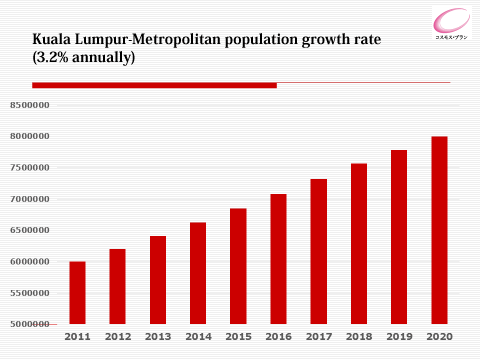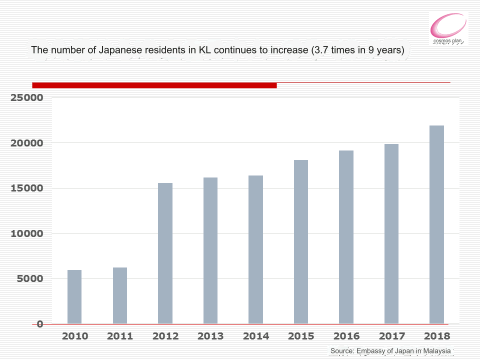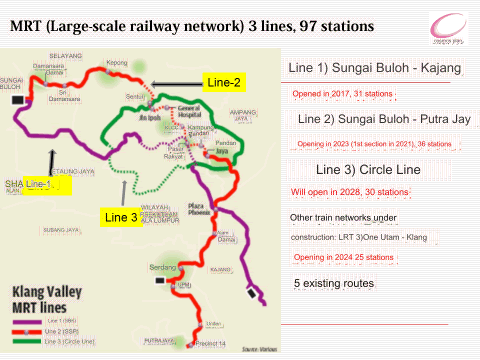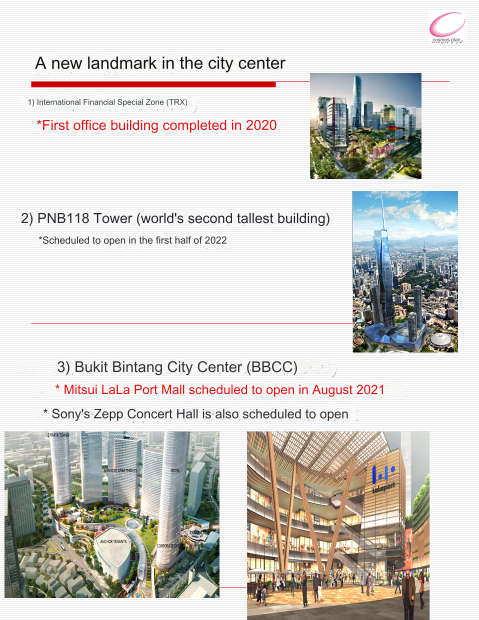(Kuala Lumpur, Johor and Penang)
23 Years of experience in MM2H. Support for Study Abroad.

Introduction of Major Cities
1) Kuala Lumpur (abbreviation: KL)
1) Kuala Lumpur (abbreviation: KL)
Click here for an introduction to each area of Kuala Lumpur
1) The population of the metropolitan area is reaching 8 million (2019) and it is projected to hit 10 million within the next 10 years.
The capital city of Kuala Lumpur covers the area of 243 square kilometers and is governed by the Malaysian Central Government.
Although the population is only about 1.8 million, the per capita income (GDP) in KL city is about 3.15 million yen / year in 2019, which is about 2.6 times higher than the national average.
The Kuala Lumpur metropolitan area has a population of about 8 million as of 2019, including the neighboring 8 districts located in the Selangor state.
Population was 6 million people in 2011, and the population has increased at an annual rate of 3.2% (more than 200,000 people every year).
Due to the natural increase and the influx of population from rural areas to the metropolitan area, it is projected that the population will continue to increase by about 3% every year,
and it is estimated that the KL metropolitan area will have a population of almost 10 million around 2030.

Source: Malaysian Government Statistics Bureau
2) The ever-increasing number of expatriate living in Kuala Lumpur
Due to the economic growth, increasing Foreign Direct Investments into Malaysia, and ratification of both CPTPP and RCEP, Kuala Lumpur’s expatriate population continues to be on a growing trend.

The reasons are: 1) Japanese manufacturing companies (particularly those related to electrical, electronic, and automobile industries) are expanding into Malaysia; 2) Distribution companies such as Aeon, Isetan, Daiso, Uniqlo, Muji, and Donki are continuing to expand into Malaysia. 3) Many Japanese restaurants, beauty salons, and IT-related service businesses are moving into the country, 4) An increasing number of Japanese seniors are staying for long periods on MM2H (long-term stay) visas, and 5) More Japanese families are sending their children to international schools or universities. It is increasing rapidly. etc.
3) Rapidly advancing railway network construction
With the rapid population growth of the KL metropolitan area, the Malaysian government is improving the railway infrastructure network.
From 2016 to 2024, 115 new train stations will be opened in the metropolitan area.
In addition, the ring road plan for the Kuala Lumpur’s metropolitan area was announced last year, and 30 new stations will be added.
Of particular interest are the 97 new stations, which are the three new lines of the mass rapid train network called MRT.
MRT Line 1 has already opened in 2017 with 31 new stations, MRT Line 2 will be partly in the latter half of 2021, and 36 new stations will be opened in the first half of 2022.
Construction of MRT Line 3 (ring line) will start in the latter half of 2021, and it is said that the construction will take about 10 years, which will create 30 new stations.

In the Kuala Lumpur metropolitan area, there are various real estate investment opportunities near these new stations.
4) Landmarks in the city center that are born one after another
Kuala Lumpur's landmarks, the Twin Towers (KLCC) and the Pavilion Mall (Bukit Bintang) are well-known internationally, but new landmarks will be added.
- KL 118 (678.9m) - 2nd tallest building in the world
- Exchange 106 (452.6m) - 2nd tallest building in Mala

These new landmarks will be born between 2020 and 2022, and the Kuala Lumpur metropolitan area, where the railway network will be rapidly developed, will offer many wonderful places (properties) for Japanese people to live and invest.
Click here for details on BBCC.




